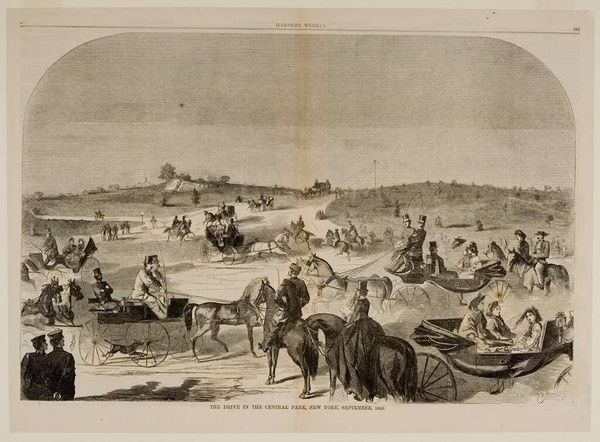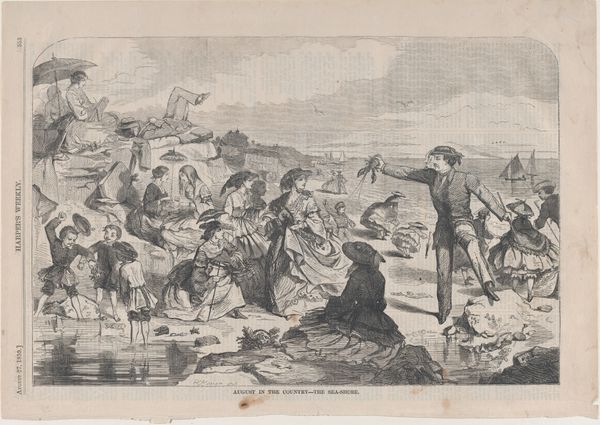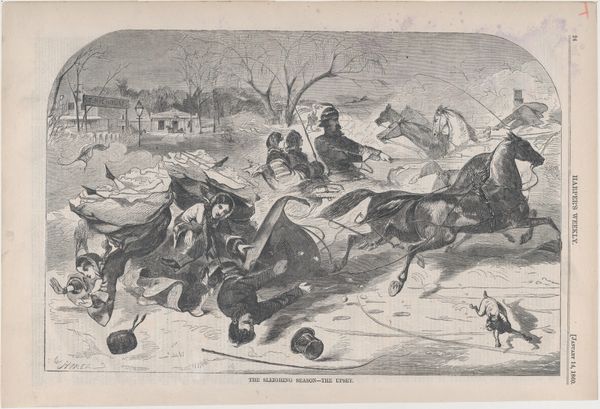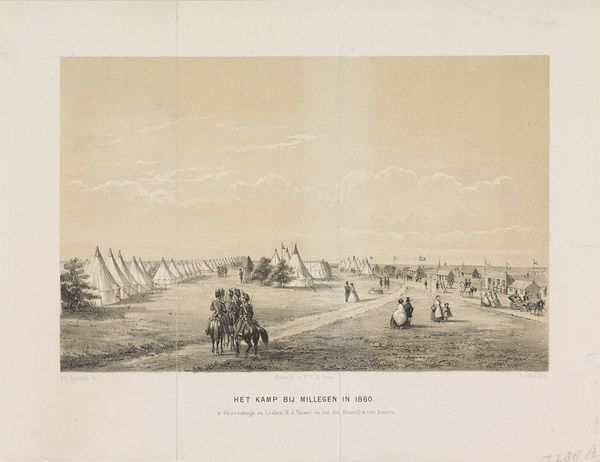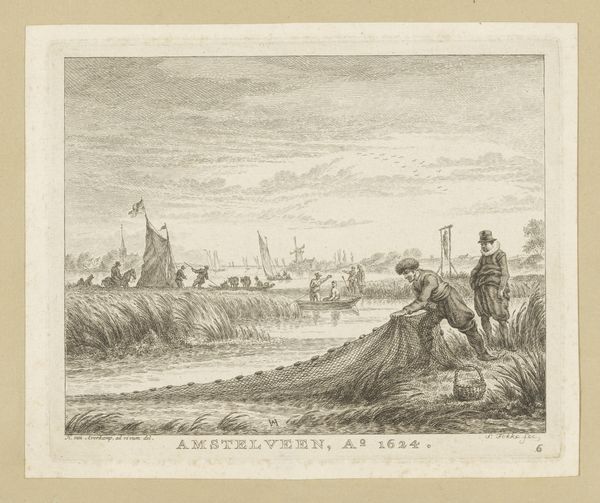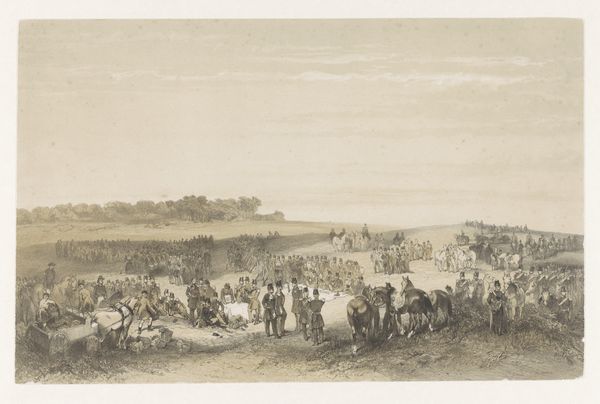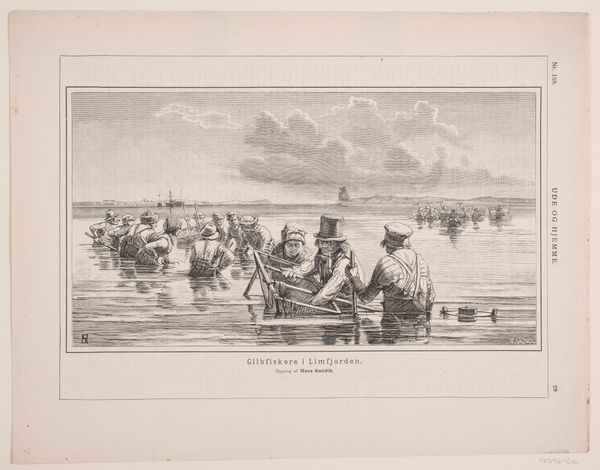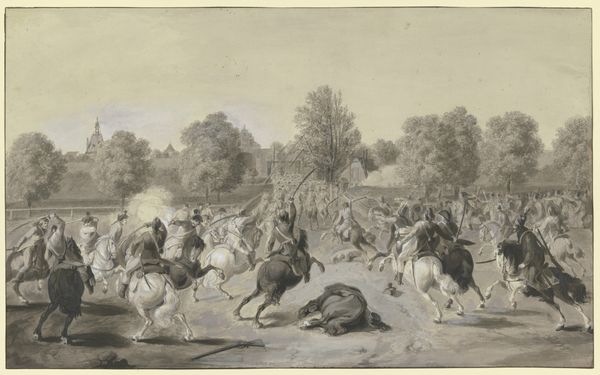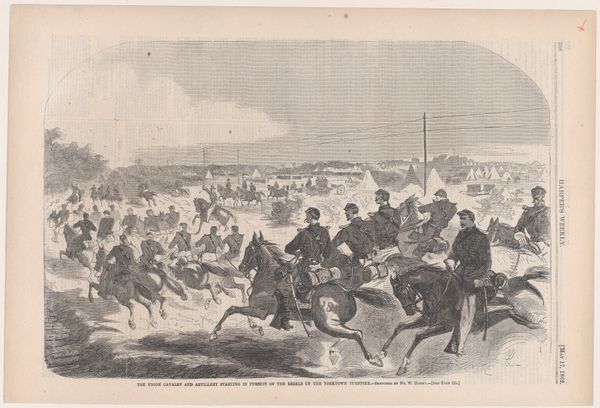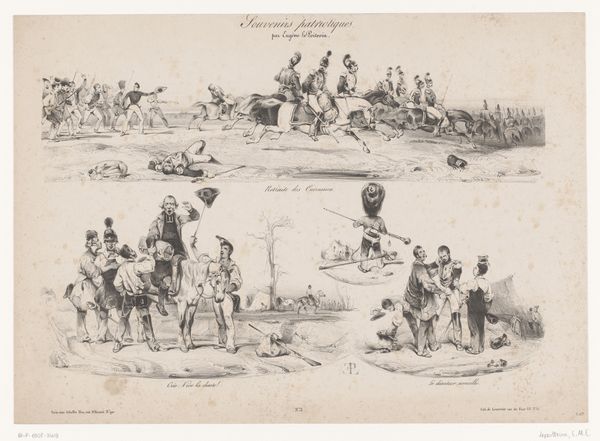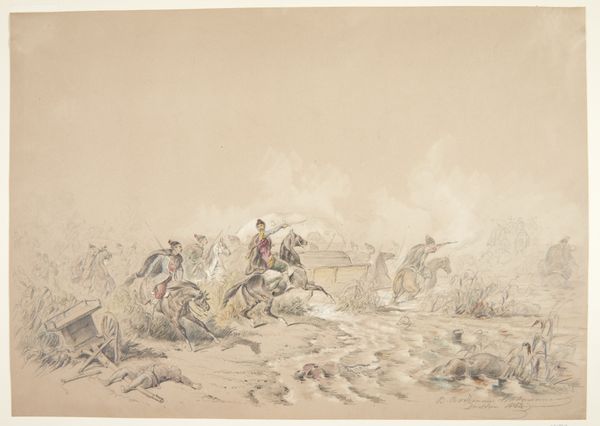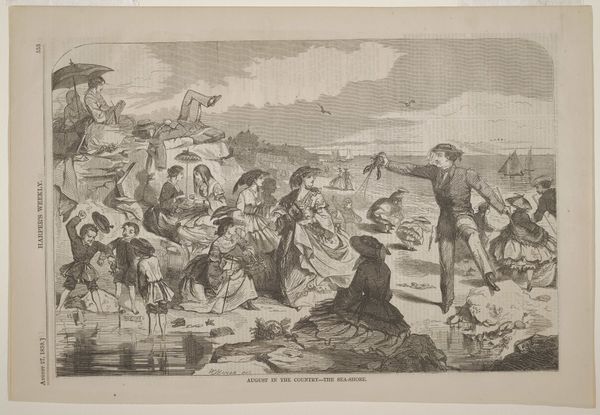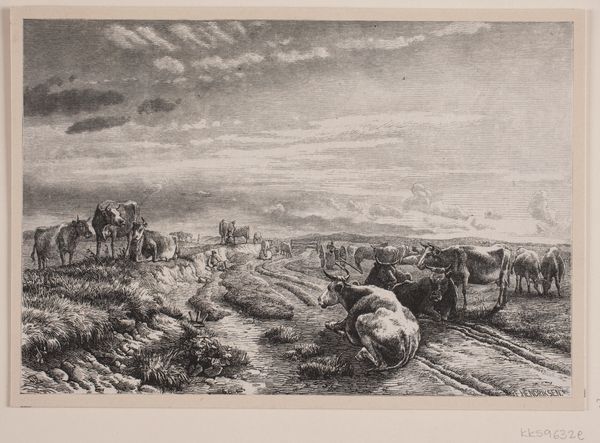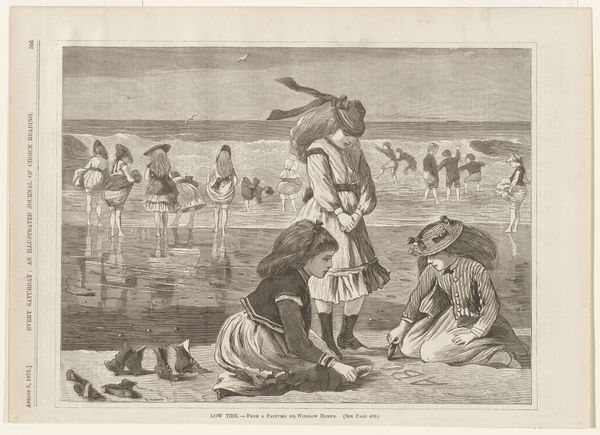
The Drive in Central Park, New York (from "Harper's Weekly," Vol. IV) 1860
0:00
0:00
drawing, print
#
drawing
# print
#
landscape
#
cityscape
#
genre-painting
#
academic-art
Dimensions: image: 9 1/2 x 13 3/4 in. (24.1 x 34.9 cm) sheet: 15 15/16 x 22 3/16 in. (40.5 x 56.4 cm)
Copyright: Public Domain
Curator: Looking at this print, the energy of the crowd practically hums off the page, doesn't it? The mood is overwhelmingly leisurely, yet somehow, simultaneously vibrant. Editor: It does. I'm thinking of Sunday afternoons; it’s pure escapism and an orchestrated performance. Curator: This is "The Drive in Central Park, New York," Winslow Homer's snapshot of Manhattan's high society in 1860. Printed in "Harper's Weekly," it was mass media, shaping perceptions of leisure and class. Editor: Mass media capturing an image of a mass of people enjoying an idyllic scene... it’s layered, isn't it? How fascinating that the print is both democratic in reach, available via the magazine, and also totally exclusionary in its representation. Who really got to partake in this "Central Park experience?" Curator: Precisely! Think of the park itself—Olmsted and Vaux’s designed landscape—ostensibly for all citizens, but immediately coded by class and race. Homer's composition echoes this tension, framing a scene of elaborate carriages and fashionable attire, subtly underscoring who had access to these spaces of leisure. Note how even the layout of the park reinforces these patterns, separating these areas from more popular activities of less privileged people, which certainly speaks to questions of social stratification within supposedly public arenas. Editor: Totally! And Central Park remains this palimpsest of desires, dreams, and social fictions; so full of contested meanings that you can wander for hours. In the park or even inside this piece of art. Does the lack of color flatten the people depicted, turning them into just props for showing wealth? Curator: Absolutely. I mean, think about the historical backdrop. 1860…the Civil War looms. And this image, seemingly innocent, promotes a very specific narrative of American life and American identity—wealthy, white, carefree—while the nation fractures under profound social injustices. It asks us to critically consider the art’s function in legitimizing and propagating specific socio-political orders. Editor: It sure does! It’s so simple at first glance. But the layers, oh, the layers are immense, especially in today’s world. Curator: Indeed. There’s more than meets the eye.
Comments
No comments
Be the first to comment and join the conversation on the ultimate creative platform.
